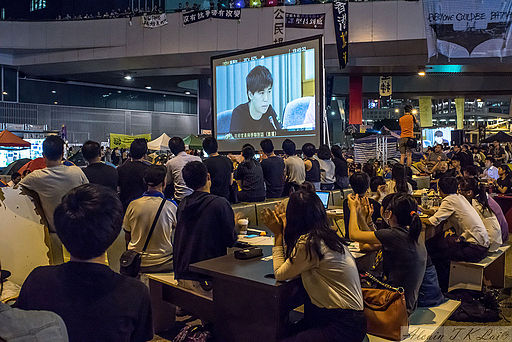Final Discussion

Overview
In this lesson, students watch each video twice. The first time, they will watch just to enjoy one another’s creative work. The second time, they will take notes that they can use for the final discussion of satire in Lesson 28.
Preparation
- Read the lesson and student content.
- Anticipate student difficulties and identify the differentiation options you will choose for working with your students.
Elements of the Videos
- Conduct a Whole Group Discussion about the elements of satire and video that students can take notes on.
Opening
Brainstorm about the following as a class.
- What elements of the videos should you take notes on?
Satirical Videos
- This should be a totally enjoyable day for students as they sit back and bask in the glory of their work.
- SWD: Consider showing the video a third (and fourth) time if necessary.
- It's also a day for focusing attention on what makes satire work. Even though students are not doing any talking today, they will be thinking hard.
- After each video is shown, each time, be sure to give some time for students to write down their notes for the next lesson's discussion.
- ELL: Be sure that all ELLs can follow the video. Pause the video, as necessary, to allow ELLs time to process the information if the pace of the video is too fast for them. Consider asking some questions before moving on to be sure that the video has been understood.
- Avoid discussion today if you can, so that you can really talk at length and in depth in the final lesson.
Work Time
Watch each video two times. That’s often a great strategy. When you first read or view something, you’re so absorbed in understanding it or reacting to it that you don’t really notice all that the writer or director has done to craft the message.
The second time around, specifically look to answer the following questions.
- What is the target of satire in this video?
- What’s its strength? What’s its weakness?
- What are two satirical strategies that you noticed?
If I Could Do It Over Again
- This is absolutely the best time to help students reflect and redirect. Today they know so well where they made mistakes and how to reconfigure.
- If students are asked to really come to grips with their own failures, and they succeed in doing so, there’s a good chance that they’ll do better another time.
- SWD: Encourage students to be open and honest, and help them find ways to be very explicit about specific help they might need the next time they do this activity.
Closing
Write a response to the following.
- If you had your video to do over again, what are some things you would do differently? Are there skills you lack that would have been useful?
Open Notebook
Feedback
- Assign videos, two per student, so that each one will have roughly the same number of reviewers.
- Encourage students to give each other thoughtful, constructive feedback on their videos.
Homework
Review the two videos assigned to you and answer the first two following questions for each. Then consider all of the satirical videos you watched when answering the rest of the questions.
- What did you like best, and what might have been changed?
- What audience do you see for this video?
- Which was the most creative?
- Which had the best acting?
- Which had the best use of satirical strategies?
- Which was the most Juvenalian?
- Which was the most Horatian?
Open Notebook